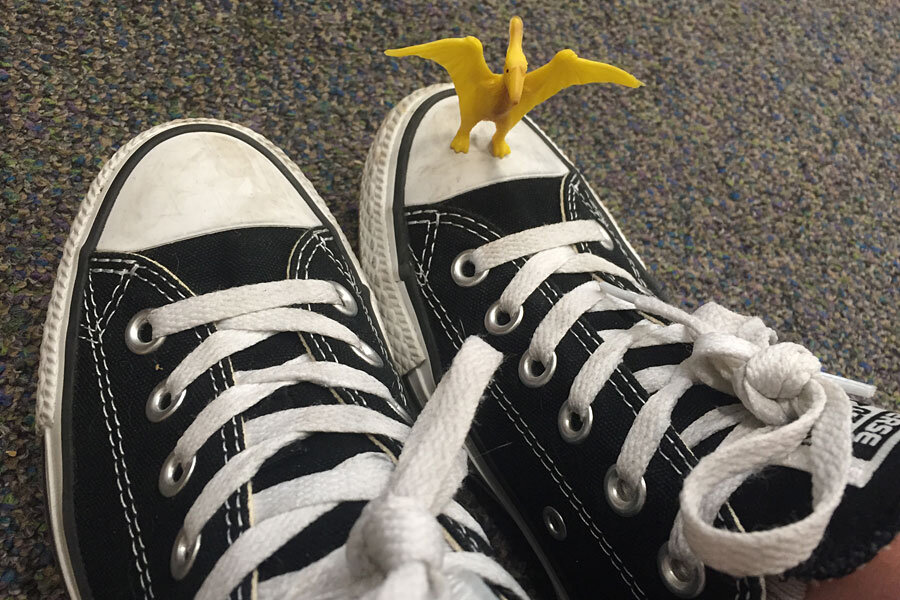#InMyShoes: How a girl's quest for dinosaur shoes is leaving a big footprint on Twitter
Loading...
A young dinosaur enthusiast in Middlesbrough, England, isn't happy with Clarks offerings of girls shoes, and she seems to have found some company.
“DEAR Clarks, I don’t like how girls have flowery shoes – I like dinosaurs and fossils, so I think that other girls might as well,” wrote Sophia Trow, age eight to the multinational shoe retailer, according to published reports.
TrowelBlazers, an online community for female archaeologists, geologists, and paleontologists, has lent their support to her campaign, posting pictures of their footwear to Twitter under the tag #InMyShoes.
In an email interview, Brenna Hassett, a founder of TrowelBlazers and a bioarchaeologist at the Natural History Museum London, writes, “When we saw the story about Sophie Trow, who wanted to purchase dinosaur themed shoes but was told they were not made for girls, we thought we could step in and show Sophie that 'dino shoes' aren’t the only way to have a connection to dinos.”
“I tweeted a picture of my shoes with our office pterodactyl figurine perched on them to make the point, with the hashtag #InMyShoes,” Dr. Hassett writes. “Happily, we have an amazing community at TrowelBlazers who jumped in to show their support for Sophie by sharing their own pictures.” (It should be noted that the pterodactyl was not a dinosaur.)
The rest of the TrowelBlazers founding team – NHM paleobiologist Victoria Herridge, University of Bordeaux archaeologist Becky Wragg Sykes, and University of Georgia archaeologist Suzanne Pilaar Birch – also stepped-up and posted their footwear in solidarity, as have many others from around the globe.
According to Hassett, their hope is that Clarks, who also make a line of ichthyosaur-themed footwear for boys called “Stompasaurus” will “jump at the chance to show Sophie their other cool paleontology related shoes and that scientists everywhere, men and women, will keep making the effort to show that it can be for anyone.” (Ichthyosaurs weren't dinosaurs either.)
“Our mission is to reset imaginations, and to show that despite common perceptions of what might be 'appropriate', women have been making contributions to the fields we work in for much longer than most people realise,” Hassett writes. “We are absolute supporters of efforts to improve the numbers of girls and women in science, especially earth science, and really believe that role models are crucial to overcoming 'stereotype threat' – the added pressure that comes with being in a minority group.”
She adds, “It was absolutely one of the best moments in TrowelBlazer history when we read that Sophie's mum had shown her our responses, and that Sophie thinks she might want to be a scientist when she grows up.”
Hassett and her colleagues strongly believe in the axiom that “if you can't see it, you can't be it.”
She concludes, “I think it's incredibly important for women who can act as role models, especially in areas where women are unrepresented like the sciences, to make an effort where they can to show girls like Sophie that dinosaurs are something anyone can be into.”






